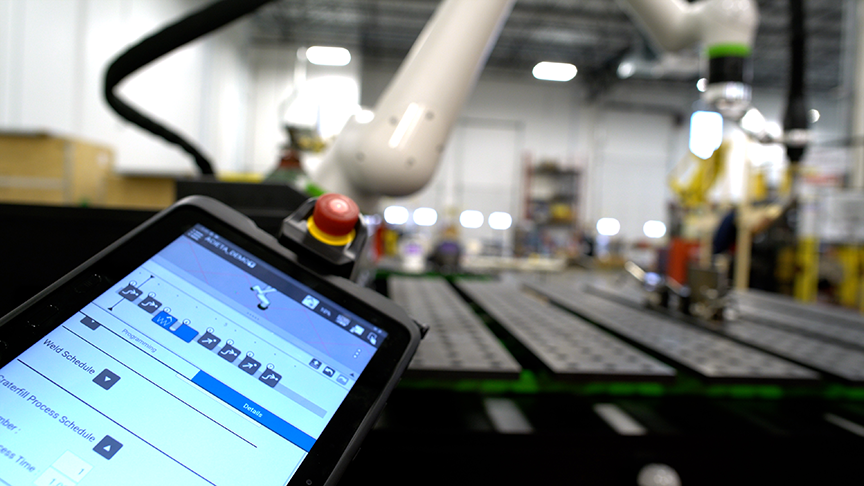
Gone are the days when robotic welding was only considered for large auto manufacturers and job shops producing long runs of a single part. Today's collaborative (cobot) welding robots have advanced in technology and are more affordable and user-friendly than ever before. Even smaller job shops with low volume runs can justify investing in a welding cobot and will likely see a quick return on investment (ROI).
In a high mix/low volume job shop, the challenge is to make line changeovers as fast as possible to minimize downtime and maximize production. After all, an idle production line isn't making any profit. Here are 5 ways that standard welding cobots can help expedite changeover and lower cost-per-part:
Simplified Programming and Operation: Welding cobots feature a tablet teach pendant, intelligent software, and intuitive interfaces with drag-and-drop icons, so workers can be trained to program welding cobots in little time, even if they have no previous programming experience. Offline programming systems allow the cobot to be programmed and tested from a PC or tablet.
Less Reliance on Skilled Laborers: The labor shortage is at an all-time high, so job shops simply cannot afford to wait for the next skilled welder to walk through the door. Instead of relying on people power, cobots can do the welding consistently and accurately all day, every day. Changeover for a welding cobot can take less time than manual changeover for a skilled welder. Plus, one operator can run more than one cobot simultaneously so there's no downtime on the lines. Cobots can also be set up to run multiple part styles at the same time.
Mobile Cobots Can be Moved to Different Production Areas: Standard welding cobots are often mounted on a cart or other mobile platform, so they can be moved around wherever they're needed in the shop. During a changeover, a welding cobot can be moved to a different production line and quickly brought online to start welding a new batch of parts. In some cases, welding cobots may offer many end-of-arm tooling options for a variety of other applications such as machine tending.
Higher Capacity to Take on More Work: Customer demands are increasing and lead times are getting shorter. When a job shop has more production lines running, there's less risk to take on additional work, even low volume orders. Higher production and lower operating costs allow shops to bid on and win more profitable jobs. These capabilities can give a job shop a competitive edge to be prepared for more work resulting from the onshoring movement.
Low Total Cost of Ownership: Pre-engineered standard welding cobots are surprisingly affordable, even for job shops with modest budgets. This is because standard cobots are faster and less expensive to build and integrate, so robot makers pass on that savings to their customers. With higher production rates, lower cost per part, and minimal maintenance requirements, the payback on a welding cobot can look very appealing to the accounting department. In many cases, financing options are available to lower initial capital expenses. With a typical ROI in as little as 6 months for 2-shift operations, a welding cobot becomes a very low-risk investment.
Ready to revolutionize your welding process with cutting-edge technology? Look no further! Our FastARC CW and FastARC CX1000 collaborative robot welding solutions are designed to increase efficiency, precision, and safety in the workplace. Don't just take our word for it, experience the difference for yourself. Contact us today and discover how Acieta can transform your operation into a powerhouse of productivity!